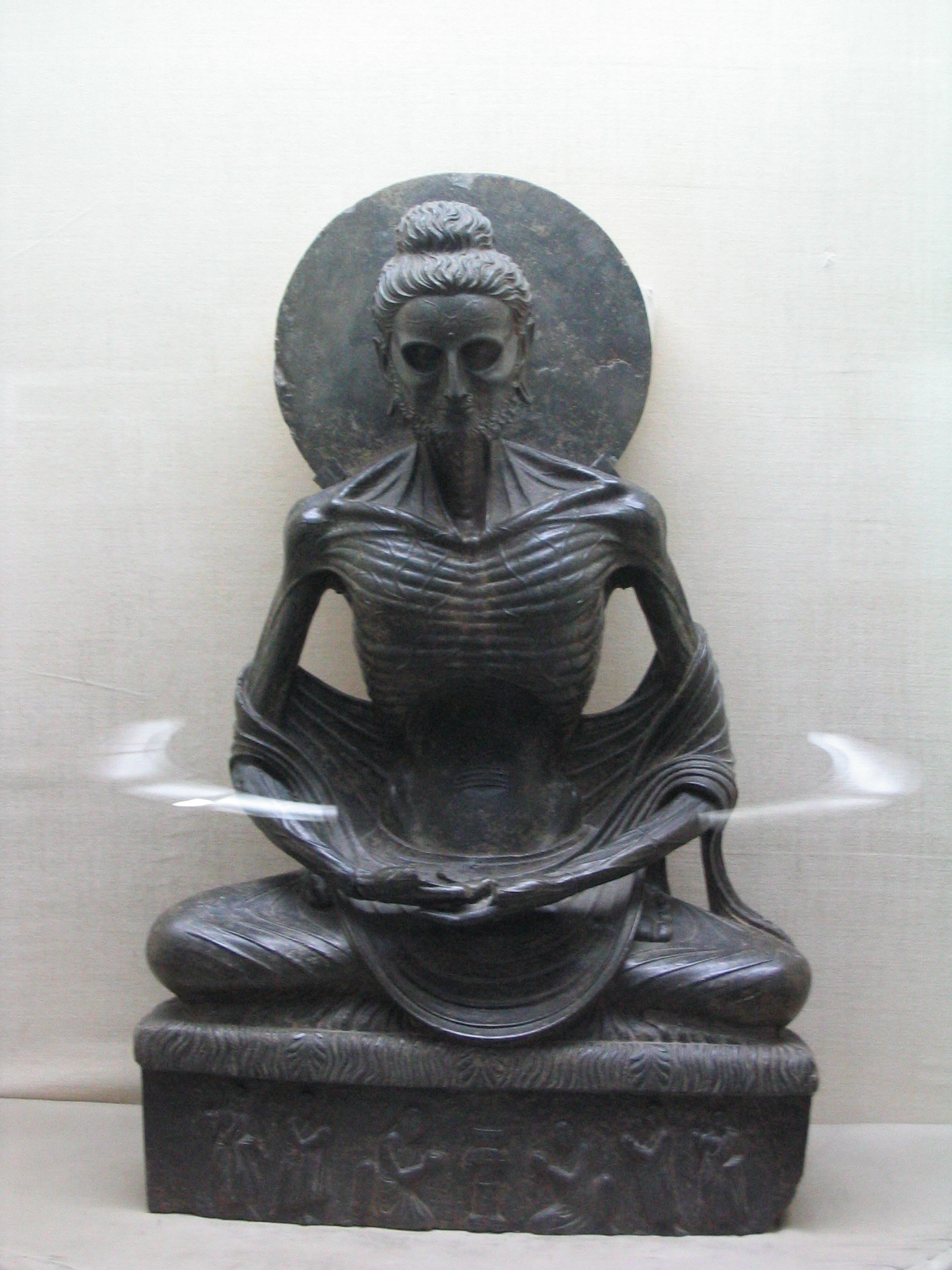|
Jhana
In the oldest texts of Buddhism, ''dhyāna'' () or ''jhāna'' () is a component of the training of the mind (''bhavana''), commonly translated as meditation, to withdraw the mind from the automatic responses to sense-impressions and "burn up" the defilements, leading to a "state of perfect equanimity and awareness ('' upekkhā- sati- parisuddhi'')." ''Dhyāna'' may have been the core practice of pre-sectarian Buddhism, in combination with several related practices which together lead to perfected mindfulness and detachment. In the later commentarial tradition, which has survived in present-day Theravāda, ''dhyāna'' is equated with "concentration", a state of one-pointed absorption in which there is a diminished awareness of the surroundings. In the contemporary Theravāda-based Vipassana movement, this absorbed state of mind is regarded as unnecessary and even non-beneficial for the first stage of awakening, which has to be reached by mindfulness of the body and ''vipassan� ... [...More Info...] [...Related Items...] OR: [Wikipedia] [Google] [Baidu] |
Buddhist Meditation
Buddhist meditation is the practice of meditation in Buddhism. The closest words for meditation in the classical languages of Buddhism are ''bhavana, bhāvanā'' ("mental development") and ''Dhyāna in Buddhism, jhāna/dhyāna'' (a state of meditative absorption resulting in a calm and luminous mind). Buddhists pursue meditation as part of the path toward Moksha, liberation from defilements (''Kleshas (Buddhism), kleshas'') and clinging and craving (''upādāna''), also called Bodhi, awakening, which results in the attainment of nirvana. The Indian Schools of Buddhism, Buddhist schools relied on numerous meditation techniques to attain meditative absorption, some of which remain influential in certain modern schools of Buddhism. Classic Buddhist meditations include ''anapanasati'' (mindfulness of breathing), ''Patikulamanasikara, asubha bhavana'' ("reflections on repulsiveness");Deleanu, Florin (1992)Mindfulness of Breathing in the Dhyāna Sūtras Transactions of the Internatio ... [...More Info...] [...Related Items...] OR: [Wikipedia] [Google] [Baidu] |
Pre-sectarian Buddhism
Pre-sectarian Buddhism, also called early Buddhism, the earliest Buddhism, original Buddhism, and primitive Buddhism, is Buddhism as theorized to have existed before the various Early Buddhist schools developed, around 250 BCE (followed by later subsects of Buddhism). The contents and teachings of this pre-sectarian Buddhism must be deduced or re-constructed from the earliest Buddhist texts, which by themselves are already sectarian. The whole subject remains intensely debated by scholars, not all of whom believe a meaningful reconstruction is possible. "Early Buddhism" may also be used for considerably later periods. Name Various terms are being used to refer to the earliest period of Buddhism: * "Pre-sectarian Buddhism" * "Early Buddhism", * "The earliest Buddhism", * "Original Buddhism", * "The Buddhism of the Buddha himself." * Precanonical Buddhism * Primitive Buddhism Some Japanese scholars refer to the subsequent period of the early Buddhist schools as ''sectarian ... [...More Info...] [...Related Items...] OR: [Wikipedia] [Google] [Baidu] |
Theravada
''Theravāda'' (; 'School of the Elders'; ) is Buddhism's oldest existing school. The school's adherents, termed ''Theravādins'' (anglicized from Pali ''theravādī''), have preserved their version of the Buddha's teaching or ''Dharma (Buddhism), Dhamma'' in the Pāli Canon for over two millennia. The Pāli Canon is the most complete Buddhist canon surviving in a Indo-Aryan languages, classical Indian language, Pāli, which serves as the school's sacred language and ''lingua franca''.Crosby, Kate (2013), ''Theravada Buddhism: Continuity, Diversity, and Identity'', p. 2. In contrast to Mahāyāna and Vajrayāna, Theravāda tends to be conservative in matters of doctrine (''pariyatti'') and monastic discipline (''vinaya''). One element of this Religious conservatism, conservatism is the fact that Theravāda rejects the authenticity of the Mahayana sutras (which appeared onwards). Consequently, Theravāda generally does not recognize the existence of many Buddhas and bodhisattva ... [...More Info...] [...Related Items...] OR: [Wikipedia] [Google] [Baidu] |
Vipassana Movement
The Vipassanā movement refers to a branch of modern Burmese Theravāda Buddhism that promotes "bare insight" (''sukha-Vipassana'') meditation practice to develop insight into the three marks of existence and attain stream entry. It gained widespread popularity since the 1950s, including through its western derivatives which have been popularised since the 1970s, giving rise to the more dhyana-oriented mindfulness movement. The Burmese Vipassana movement has its roots in the 19th century, when Theravada Buddhism came to be influenced by western modernism, and some monks tried to restore the Buddhist practice of meditation. Based on the commentaries, Ledi Sayadaw popularized ''Vipassana meditation'' for lay people, teaching '' samatha'' and stressing the practice of '' satipatthana'' to acquire '' Vipassana'' (insight) into the three marks of existence as the main means to attain the beginning of awakening and become a stream-enterer. It was greatly popularized in the 20 ... [...More Info...] [...Related Items...] OR: [Wikipedia] [Google] [Baidu] |
Equanimity
Equanimity is a state of psychological stability and composure which is undisturbed by the experience of or exposure to emotions, pain, or other phenomena that may otherwise cause a loss of mental balance. The virtue and value of equanimity is extolled and advocated by a number of major religions and ancient philosophies. Etymology From French , from Latin (nom. ) "evenness of mind, calmness," from "even, level" (see equal) + "mind, spirit" (see animus). Meaning "evenness of temper" in English is from 1610s. Religion Indian religions Hinduism In Hinduism the term for equanimity is (also rendered or ). In Chapter Two, Verse 48 of the '' Bhagavad Gita'' one reads: . Srila Prabhupada translates this as: "Perform your duty equipoised, O Arjuna, abandoning all attachment to success or failure. Such equanimity is called yoga." In his book ''Samatvam – The Yoga of Equanimity'', Swami Sivananda states: Yoga Another Sanskrit term for equanimity is . This is the term use ... [...More Info...] [...Related Items...] OR: [Wikipedia] [Google] [Baidu] |
Upekṣā
() is the Buddhist concept of equanimity. As one of the brahmaviharas or "virtues of the "Brahma realm" (), it is one of the wholesome mental factors (( ) cultivated on the Buddhist path to nirvāna through the practice of jhāna. Pali literature Many passages in the Pali Canon and post-canonical commentaries identify upekkhā as an important aspect of spiritual development. It is one of the Four Sublime States of Brahmavihara, which purify mental states capable of counteracting the defilements of lust, aversion, and ignorance. As a Brahmavihara, it is also one of the forty traditionally identified subjects of Buddhist meditation ( kammaṭṭhāna). In the Theravada list of ten pāramī (perfections), is the last-identified bodhisatta practice, and in the Seven Factors of Awakening (), it is the ultimate characteristic to develop. To practice is to be unwavering or to stay neutral in the face of the eight vicissitudes of life which are otherwise known as the ''eight ... [...More Info...] [...Related Items...] OR: [Wikipedia] [Google] [Baidu] |
Meditation
Meditation is a practice in which an individual uses a technique to train attention and awareness and detach from reflexive, "discursive thinking", achieving a mentally clear and emotionally calm and stable state, while not judging the meditation process itself. Techniques are broadly classified into focused (or concentrative) and open monitoring methods. Focused methods involve attention to specific objects like breath or mantras, while open monitoring includes mindfulness and awareness of mental events. Meditation is practiced in numerous religious traditions, though it is also practised independently from any religious or spiritual influences for its health benefits. The earliest records of meditation ('' dhyana'') are found in the Upanishads, and meditation plays a salient role in the contemplative repertoire of Jainism, Buddhism and Hinduism. Meditation-like techniques are also known in Judaism, Christianity and Islam, in the context of remembrance of and prayer and dev ... [...More Info...] [...Related Items...] OR: [Wikipedia] [Google] [Baidu] |
Buddhaghosa
Buddhaghosa was a 5th-century Sinhalese Theravādin Buddhist commentator, translator, and philosopher. He worked in the great monastery (''mahāvihāra'') at Anurādhapura, Sri Lanka and saw himself as being part of the Vibhajyavāda school and in the lineage of the Sinhalese ''mahāvihāra''. His best-known work is the ''Visuddhimagga'' ("Path of Purification"), a comprehensive summary of older Sinhala commentaries on the scriptural canon of the Theravāda school. According to Sarah Shaw, in Theravāda Buddhism this systematic work is "the principal text on the subject of meditation." The interpretations provided by Buddhaghosa have generally constituted the orthodox understanding of Theravādin scriptures since at least the 12th century CE. Buddhaghosa is generally recognized by both Western scholars and Theravādin Buddhists as the most important philosopher and commentator of the Theravāda school. Name The name ''Buddhaghosa'' means "Voice of the Buddha" (''Budd ... [...More Info...] [...Related Items...] OR: [Wikipedia] [Google] [Baidu] |
Sati (Buddhism)
Sati (; '' smṛti''), literally "memory" or "retention", commonly translated as mindfulness, "to remember to observe", is an essential part of Buddhist practice. It has the related meanings of calling to mind the wholesome '' dhammas'' such as the four establishments of mindfulness, the five faculties, the five powers, the seven awakening-factors, the Noble Eightfold Path, and the attainment of insight, and the actual practice of maintaining a lucid awareness of the ''dhammas'' of bodily and mental phenomena, in order to counter the arising of unwholesome states, and to develop wholesome states. It is the first factor of the Seven Factors of Enlightenment. "Correct" or "right" mindfulness (Pali: ''sammā-sati'', Sanskrit ''samyak-smṛti'') is the seventh element of the Noble Eightfold Path. Definition The Buddhist term translated into English as "mindfulness," "to remember to observe," originates in the Pali term ''sati'' and in its Sanskrit counterpart smṛti. Ac ... [...More Info...] [...Related Items...] OR: [Wikipedia] [Google] [Baidu] |
Saraswati
Saraswati (, ), also spelled as Sarasvati, is one of the principal Devi, goddesses in Hinduism, revered as the goddess of knowledge, education, learning, arts, speech, poetry, music, purification, language and culture. Together with the goddesses Lakshmi and Parvati, she forms the trinity of chief goddesses, known as the Tridevi. Sarasvati is a pan-Indian deity, venerated not only in Hinduism but also in Jainism and Buddhism.Ludvik (2007), pp. 1, 11. She is one of the prominent goddesses in the Historical Vedic religion, Vedic tradition (1500 to 500 BCE) who retains her significance in later Hinduism. In the Vedas, her characteristics and attributes are closely connected with the Sarasvati River, making her one of the earliest examples of a Rivers in Hinduism, river goddess in Indian tradition. As a deity associated with a river, Sarasvati is revered for her dual abilities to purify and to nurture fertility. In later Vedic literature, particularly the Brahmanas, Sarasvati is i ... [...More Info...] [...Related Items...] OR: [Wikipedia] [Google] [Baidu] |
Vedas
FIle:Atharva-Veda samhita page 471 illustration.png, upright=1.2, The Vedas are ancient Sanskrit texts of Hinduism. Above: A page from the ''Atharvaveda''. The Vedas ( or ; ), sometimes collectively called the Veda, are a large body of religious texts originating in ancient India. Composed in Vedic Sanskrit, the texts constitute the oldest layer of Sanskrit literature and the oldest Hindu texts, scriptures of Hinduism. There are four Vedas: the Rigveda, the Yajurveda, the Samaveda and the Atharvaveda. Each Veda has four subdivisions – the Samhitas (mantras and benedictions), the Brahmanas (commentaries on and explanation of rituals, ceremonies and sacrifices – Yajñas), the Aranyakas (text on rituals, ceremonies, sacrifices and symbolic-sacrifices), and the Upanishads (texts discussing meditation, philosophy and spiritual knowledge).Gavin Flood (1996), ''An Introduction to Hinduism'', Cambridge University Press, , pp. 35–39A Bhattacharya (2006), ''Hindu Dharma: Introduc ... [...More Info...] [...Related Items...] OR: [Wikipedia] [Google] [Baidu] |
Common Era
Common Era (CE) and Before the Common Era (BCE) are year notations for the Gregorian calendar (and its predecessor, the Julian calendar), the world's most widely used calendar era. Common Era and Before the Common Era are alternatives to the original Anno Domini (AD) and Before Christ (BC) notations used for the same calendar era. The two notation systems are numerically equivalent: " CE" and "AD " each describe the current year; "400 BCE" and "400 BC" are the same year. The expression can be traced back to 1615, when it first appears in a book by Johannes Kepler as the (), and to 1635 in English as " Vulgar Era". The term "Common Era" can be found in English as early as 1708, and became more widely used in the mid-19th century by Jewish religious scholars. Since the late 20th century, BCE and CE have become popular in academic and scientific publications on the grounds that BCE and CE are religiously neutral terms. They have been promoted as more sensitive to non-Christia ... [...More Info...] [...Related Items...] OR: [Wikipedia] [Google] [Baidu] |








